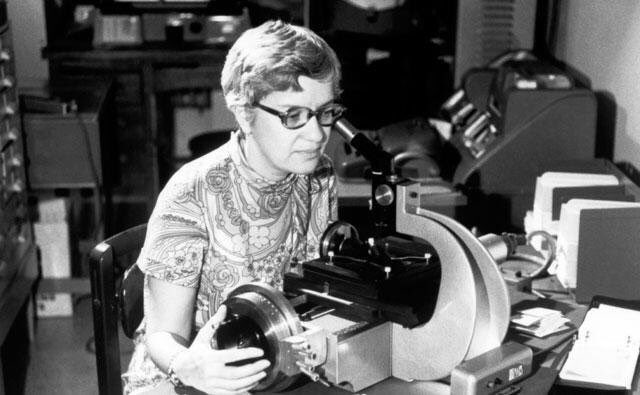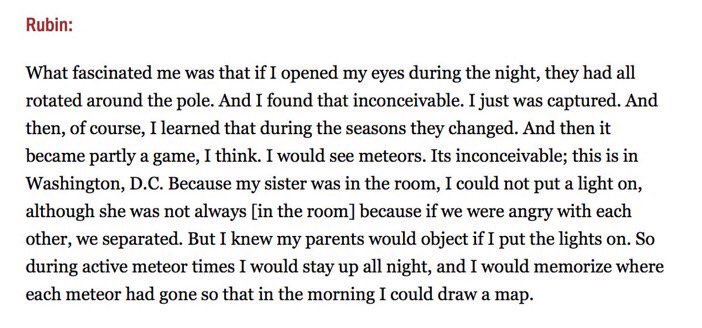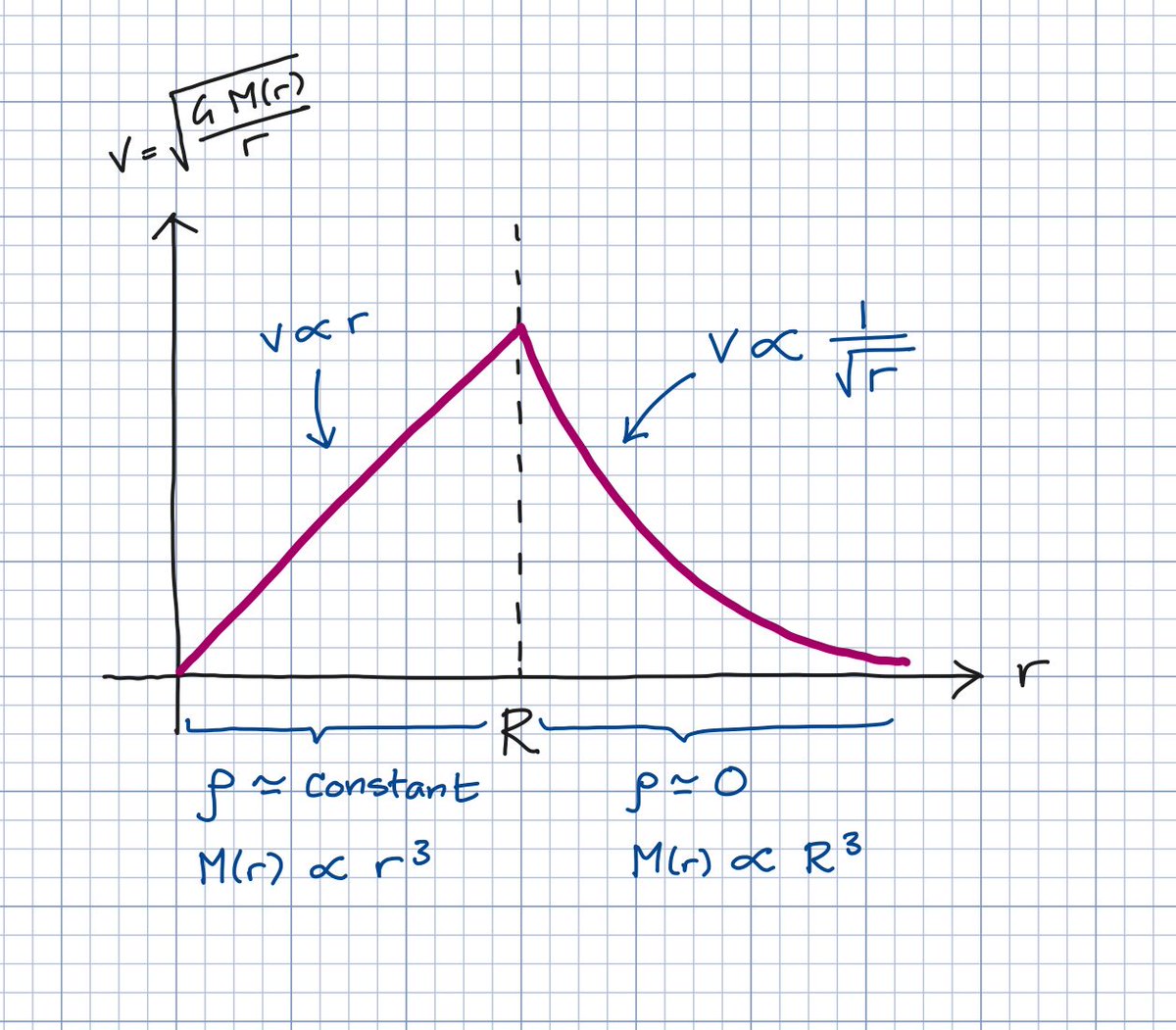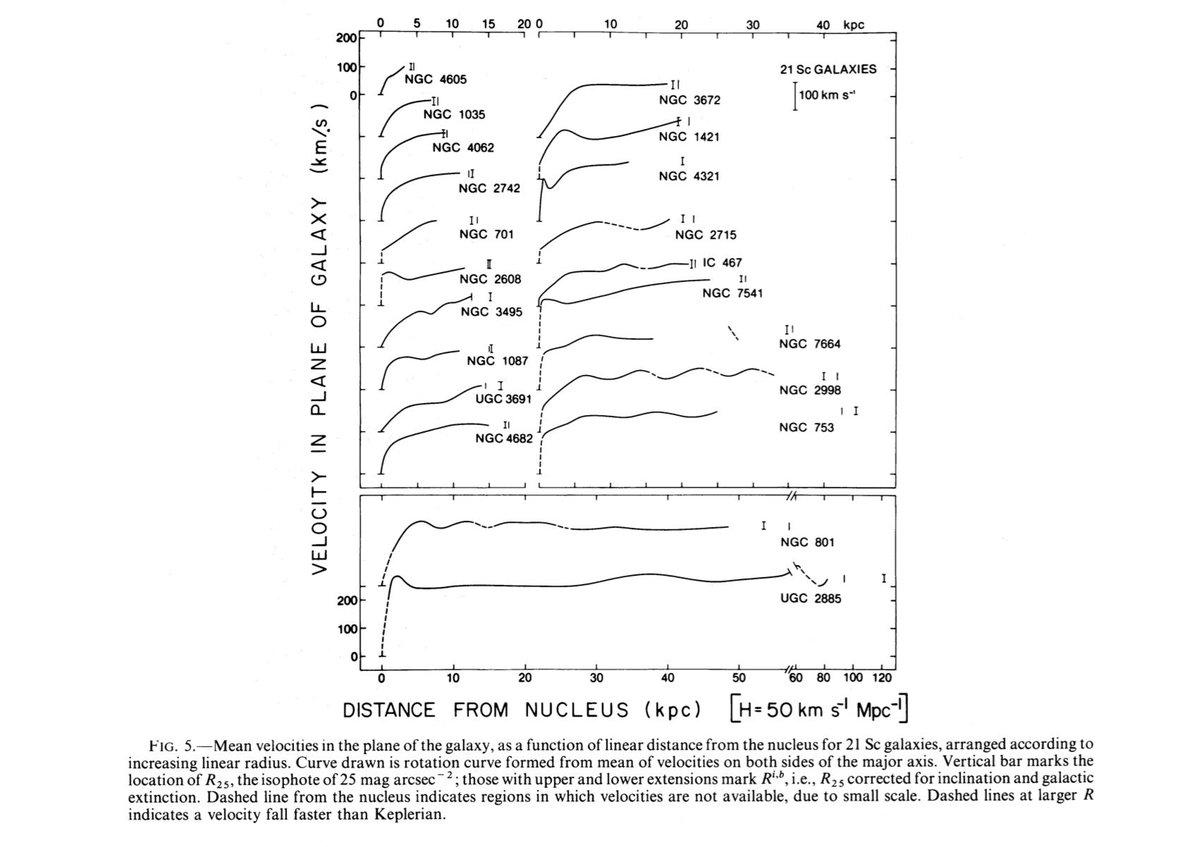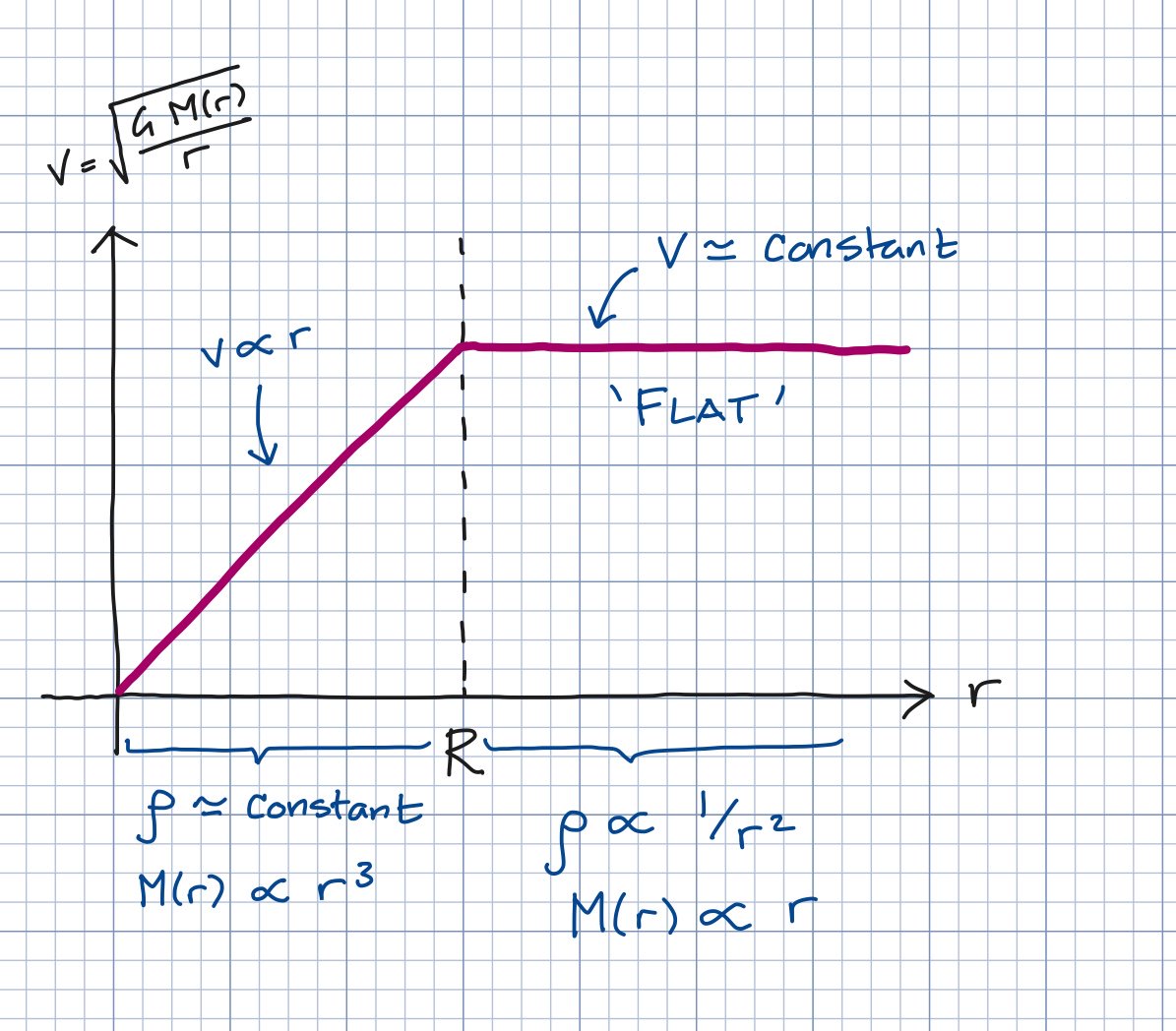The astronomer Vera Rubin was born #OTD in 1928. Her work on galactic rotation curves became one of the main pieces of evidence for the existence of dark matter, and she deserved a Nobel Prize for it.
Image: Emilio Segre Visual Archives/AIP/SP
Image: Emilio Segre Visual Archives/AIP/SP
Words to live by, from David DeVorkin’s AIP interview of Vera Rubin. They were talking about her childhood fascination with astronomy.
DeVorkin: “What possessed you to do such a thing?”
Rubin: “I don’t have the vaguest idea. I just found it fascinating.”
https://www.aip.org/history-programs/niels-bohr-library/oral-histories/5920-1
DeVorkin: “What possessed you to do such a thing?”
Rubin: “I don’t have the vaguest idea. I just found it fascinating.”
https://www.aip.org/history-programs/niels-bohr-library/oral-histories/5920-1
The first case for dark matter was made by Fritz Zwicky in the 1930s. His observations of galaxies in the Coma Cluster suggested there simply wasn't enough luminous matter present to gravitationally hold everything together. Hence, there must be matter there that you can't see.
Around that same time, a young Vera Rubin was looking up at the sky in wonder. In interviews, she would often say “I just couldn’t look at the sky without wondering how anyone could do anything but study the stars.”
Rubin studied astronomy at Vassar College, graduating in 1948. After that, she followed her husband to Cornell where she completed a Master's Degree in 1951.
For her Master's Thesis, Vera Rubin showed that some galaxies and clusters seemed to deviate from their local Hubble flow. This wasn't taken very seriously at the time.
After that, Rubin pursued her PhD at Georgetown, where she was supervised by George Gamow. She studied variations in the spatial distribution of galaxies – work that would explain the phenomena she observed in her Master's Thesis.
She didn't know it at the time, but she had identified the Supergalactic Plane. After completing her PhD in 1954, Rubin presented the results at the AAS meeting. One of her advisors suggested he present it for her (in *his* name) because she was pregnant. http://www.astronomy.com/news/2016/10/vera-rubin
Again, the work was not well-received. But Rubin was ahead of her time, and the investigation of large-scale structure would eventually become one of the major themes of astronomy. See, for instance: https://twitter.com/mcnees/status/939213341586751489
Vera Rubin joined the faculty of the Carnegie Institute in 1964. In the early 1970s she began the work for which she is most famous: Optical spectra of spiral galaxies that extended far enough from the galactic nucleus to provide support for flat rotation curves.
So what's a rotation curve, what does it mean to be "flat," and what does that have to do with dark matter? (Get ready for some over-simplifications!)
Suppose you measured the orbital velocities of stars within a galaxy. If you know how matter is distributed throughout the galaxy, you can use plain old Newtonian gravity to get an idea of how fast things should be moving.
To keep things simple, let's say that the galaxy is roughly spherical. Then a star located a distance r from the center of the galaxy should orbit with speed v ~ (G*M(r)/r)^{1/2}. Here G is Newton's constant, and M(r) is the mass of all the matter out to distance r.
The density of luminous matter – the stuff you can see – may look more or less constant out to r, in which case M(r) ~ r^{3} and you expect the orbital speed to grow linearly with r.
Out past some distance R you don't see any more luminous matter (the galaxy has a finite size). So for r > R the mass M(r) is constant and the orbital speed begins to fall off like v ~ (1/r)^{1/2}.
A "rotation curve" is a plot with orbital speed on the vertical axis and distance from the center of the galaxy on the horizontal. For the scenario I just described, you would expect it to look something like this:
But this isn't what Vera Rubin and her collaborators found! Instead, their rotation curves became roughly flat out past the point where the density of luminous matter dropped off. Stuff at the edge of the galaxy was orbiting too fast given the matter they could account for.
The 1980 Astrophysical Journal paper by Rubin, Ford, and Thonnard is usually cited in textbooks discussing this phenomenon. Check out the rotation curves!
https://ui.adsabs.harvard.edu/abs/1980ApJ...238..471R/abstract
Image: Astrophysical Journal, Vol. 238, p. 471-487 (1980)
https://ui.adsabs.harvard.edu/abs/1980ApJ...238..471R/abstract
Image: Astrophysical Journal, Vol. 238, p. 471-487 (1980)
There was already some evidence for something like this from radio observations. Rubin et al took advantage of advances in optical instrumentation to provide unambiguous evidence of the disconnect between rotation rates and the amount of luminous matter in galaxies.
There's a simple explanation for this. When I was working out that first rotation curve, I assumed that the mass M(r) out to distance r came from all the luminous stuff I could see. But what if there's other matter besides that?
Suppose the galaxy was surrounded by a roughly spherical halo of non-luminous matter with density that falls off like 1/r^2. That would give a contribution to M(r) proportional to r, which would flatten the rotation curve out past R:
Now, I am glossing over a lot of details here, but that's the main idea. You look at how fast things are moving as a function of distance from the galactic center, and the amount of matter you can see doesn't provide enough of a gravitational tug to explain what you see.
To explain the data you need more matter, stuff that you don't see via electromagnetic interactions. Non-luminous isn't a very catchy name, so we call it "dark matter."
The case for dark matter now extends well beyond galactic rotation curves. The dynamics of galaxy clusters, gravitational lensing, the existence of especially old galaxies, and cosmological models all support the existence of dark matter. It seems to be about 25% of the universe!
(Compare that to familiar baryonic matter, which seems to be only about 5% of what's out there.)
There's a pretty good list of folks who should share the credit for the discovery of dark matter. Long before Zwicky, Kelvin tried to survey the mass content of "dark bodies" in our galaxy. Poincaré introduced the term "matière obscure" when rebutting him.
Both Kapteyn and Oort suggested that there was too little visible matter to explain the dynamics of stars in our galaxy. Rubin and Ford's work took place throughout the 1970s; Albert Bosma's 1978 thesis provides radio measurements of flat rotation curves:
http://ned.ipac.caltech.edu/level5/March05/Bosma/frames.html
http://ned.ipac.caltech.edu/level5/March05/Bosma/frames.html
Bosma himself wrote a detailed account of all the folks who he felt should receive more credit for their work establishing flat rotation curves. (H/t @AstroMikeMerri)
https://ned.ipac.caltech.edu/level5/Sept03/Bosma/Bosma_app.html
https://ned.ipac.caltech.edu/level5/Sept03/Bosma/Bosma_app.html
Unfortunately, the Nobel Committee passed over Rubin several times. I'm not sure what more one can do besides help establish the existence of 26% of the universe. Imo, the evidence here is just as solid as the evidence for dark energy (the 2011 prize).
The lack of a Nobel doesn't diminish Rubin's contributions, but it does a lot to diminish the Nobel.
 A thread on Vera Rubin, rotation curves, and dark matter.
A thread on Vera Rubin, rotation curves, and dark matter.

 Read on Twitter
Read on Twitter